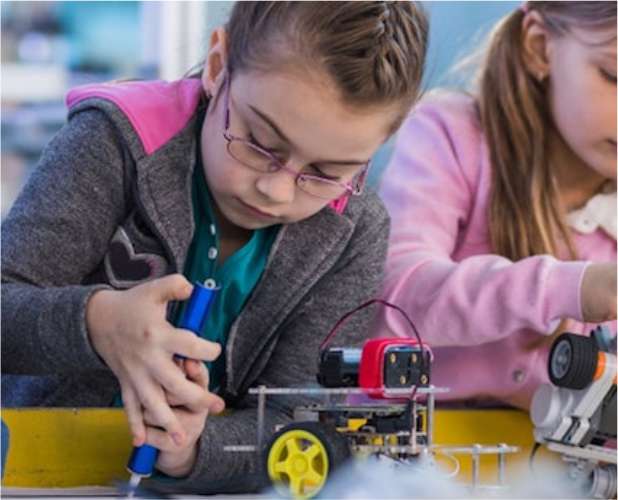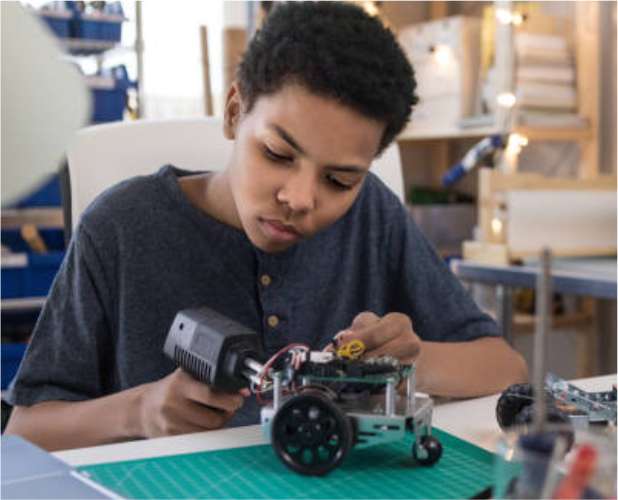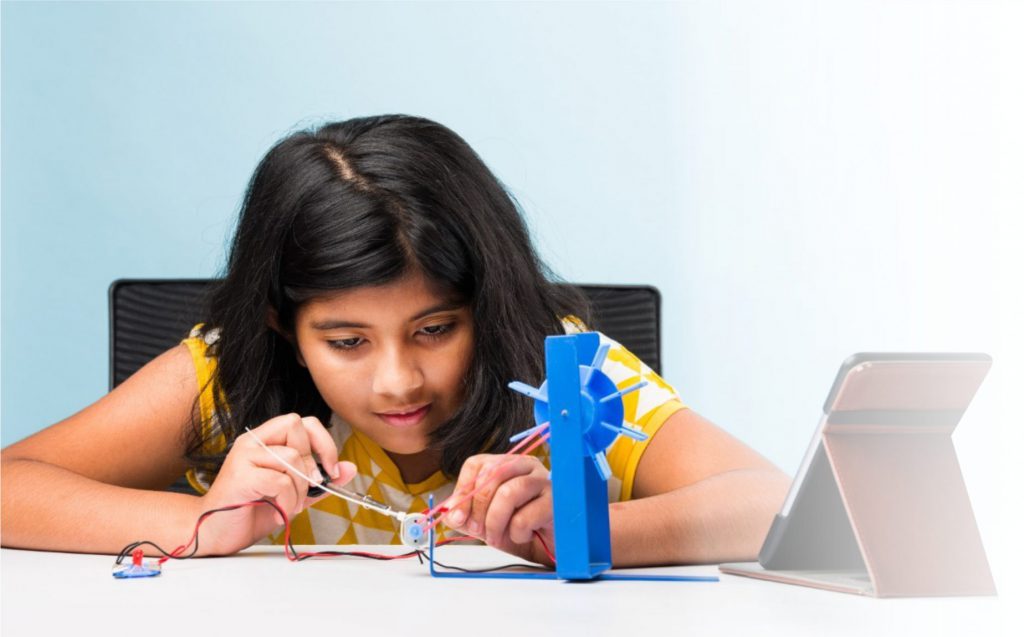Coding serves as the foundation for many of these innovative technologies, which in isolation too, is a very relevant skill to learn that can help shape & expand our horizon and serve as an expression of creativity.
Kids today have developed relative ease with technology, as technology by way of their use of smartphones & tablets has become an indispensable part of their lives. This ease needs to be tapped into by initiating kids to coding in their early formative years. This initiation to coding will help a kid build on some very important skills for the technology-enabled future of tomorrow and set themselves up for a lifetime of opportunities.

If one follows a very structured approach to learning how to code, like the Hands-on approach, one can start thinking on various lines that will offer more evolved solutions to an existing set of codes. This structured approach is especially beneficial for kids, as it provides an easy initiation to coding.
The Hands-On learning approach to coding initiates the interest of kids in the field of coding. It helps kids to identify the inner “Tinkerer” within them, which they can use to further the growth in the learning curve. Hands-On Coding allows kids to understand the concepts of coding better and make the process more exciting.
Why Should Kids Learn How to Code?
Learning how to code is a very relevant skill, that will provide kids with an edge in the digital-first future that is taking shape. Besides this, coding will help a kid gain a competitive advantage over some of their peers. Learning to code helps a kid to perceive the world in a different light, as they develop a better understanding of the fundamentals of a particular technology.

But, there has to be a proper approach to learn how to code, because it is only then that coding will become a relevant skill for kids. The Hands-On Coding approach which has many advantages attached to it solves the purpose.
Advantages Of Learning To Code Through Hands-On approach
1. Learning through this approach not only teaches us how to code, but it also initiates us to new-age technologies like AI, ML, Robotics, & IoT.
2. Coding serves as an indispensable part of these innovative technologies and the Hands-On approach taps into this by teaching about these technologies in conjunction with Coding which makes learning how to code fun & thought-provoking.
3. As this approach integrates learning about the different new-age tech a kid can view for themselves how their single line of code has real-life tangible effects on the working of a particular technology, and this brings about a greater level of understanding.
4. The Hands-On approach allows kids with the creative freedom to approach coding intriguingly and this elucidates the learning process.
5. This approach provides an engaging way to learn to code, one that helps kids’ enhance their analytical & logical skills.
What Should Be The Appropriate Age For Kids To Start Learning How To Code?
When it comes to the right age at which kids should start learning how to code, an approach should be followed which states that -The Earlier, The Better. This means that kids should be initiated to coding at the earliest possible age or more specifically during their early formative years, as in when the kids are in the age bracket of 6-7. Even though different kids have different grasping power, like, some are more receptive to information at a certain age than others.

The early age should be preferred while initiating a kid to coding because whatever thinking approach kids build now, will help them develop a solution-oriented mindset from the very beginning that will help them not only in academics but in different avenues of life. Learning to code pretty early adds a competitive edge, and the kids learn & implement their core skills of logic & ingenuity. The main idea to introduce coding in a play-based curriculum is to help kids develop a problem-solving attitude.
How Tinkerly Initiates Kids On The Path Of Learning How To Code?
Tinkerly offers interactive learning modules that provide kids with access to recorded & 1:1 live sessions and also incorporate STEM toys into the learning process provides a very easy initiation to coding at a young age.
Here Tinkerly’s main focus is on following the right approach, which will make the process of learning an engaging experience.
Tinkerly introduces kids to coding at an early age, and kids can leverage this learning process to create real-life projects by integrating STEM toys. Here the importance is laid on putting things into practice and learning by doing, which ultimately reduces the screen time by 50 percent and helps kids learn beyond the screen by using the flipped learning approach where kids can see the tangible effects of their code.
Conclusion
In a nutshell, introducing kids to coding in their early elementary years is the most appropriate age for a kid to start how to code as by doing this the kid will seize the perfect moment to foster their cognitive skills and their ingenuity, which will sow the seeds of solving complex problems with relative ease. The relevance that the coding field holds is increasingly gaining prominence because of its integration with new-age tech.
Subscribe to our blog and be the first one to receive a notification whenever we publish our brand new blog!
 1664
1664




